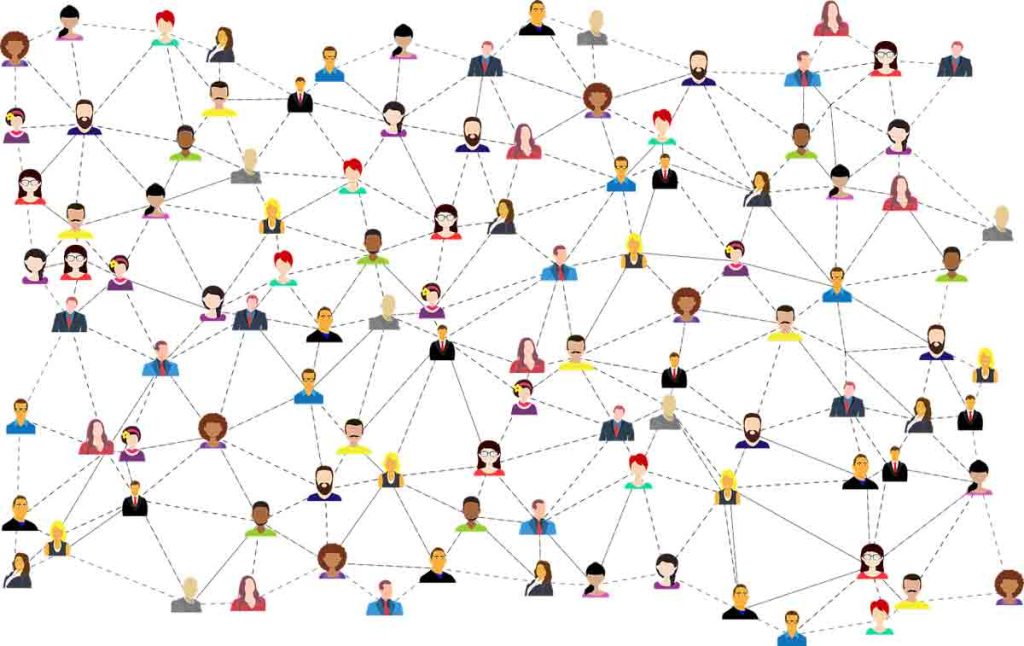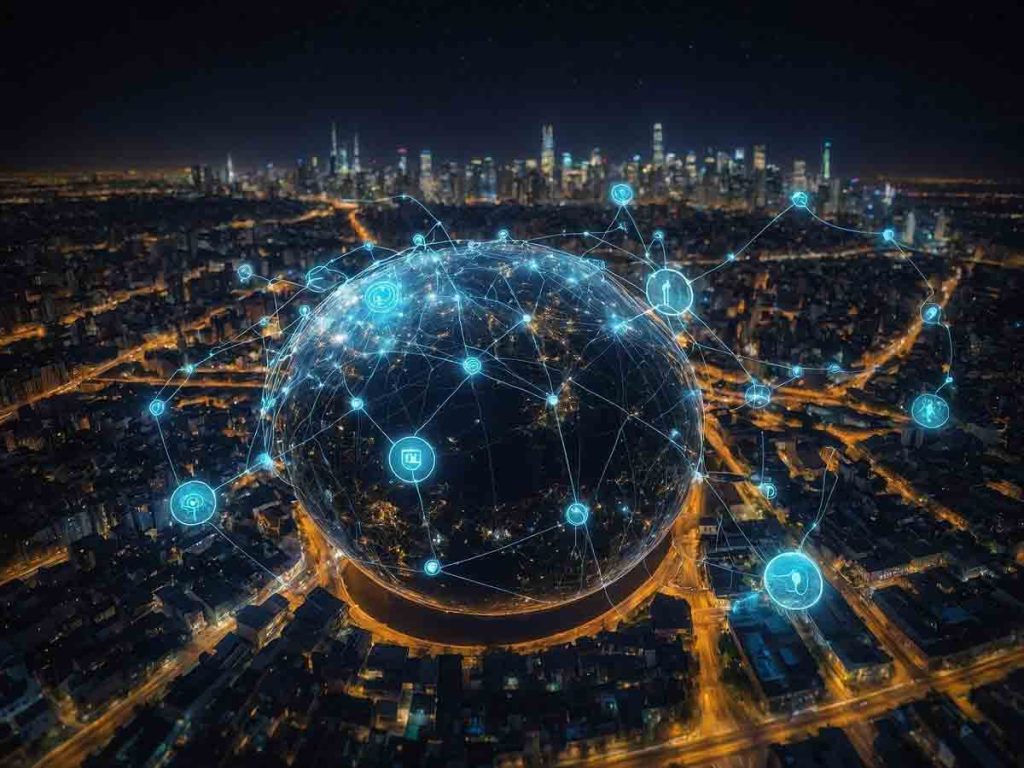Paragraph On Internet – Know Everything
In today’s digital age, the internet has become an integral part of our daily lives. It has revolutionized the way we communicate, work, and access information. This “Paragraph On Internet” aims to explore the profound impact the internet has on various aspects of modern society.
From social networking and online education to e-commerce and entertainment, the internet offers endless possibilities that continue to shape our world in unprecedented ways.
As we delve into this topic, it is essential to understand both the advantages and challenges that come with our increasing reliance on this powerful tool.
Key Facts About the Internet
| Aspect | Details |
|---|---|
| What is the Internet? | A global network of interconnected computers and servers. |
| Who invented the Internet? | Various contributors, including ARPANET developers and Tim Berners-Lee. |
| When was it invented? | The concept originated in the 1960s; ARPANET launched in 1969. |
| Number of Internet Servers | Estimated at over 75 million globally (as of recent data). |
| Number of Internet Users | Over 5 billion users worldwide (as of recent data). |
| Main Uses | Communication, information access, entertainment, e-commerce, education, and remote work. |
| Key Technologies | IP addresses, DNS, data packets, routers, servers, TCP/IP protocols. |
| Types of Connections | Dial-up, broadband, wireless (Wi-Fi), mobile Internet, satellite, fiber-optic. |

Paragraph On Internet 100 Words
The Internet is a vast, global network that connects millions of computers, smartphones, and other devices, enabling them to communicate and share information. This interconnected system allows us to access websites, send emails, stream videos, and use social media platforms, among many other activities.
It works by using a complex infrastructure of servers, data centers, and communication lines that transmit data at incredible speeds. The internet has revolutionized the way we live, work, and play by providing instant access to information, enabling remote work, facilitating online education, and connecting people from all corners of the globe.
Whether you’re looking up the latest news, chatting with friends across the world, or shopping online, the internet makes it all possible, becoming an indispensable part of our daily lives.
Paragraph On Internet 150 Words
The Internet is a complex, global system that relies on interconnected computers communicating through packet switching and standardized protocols. When data is sent over the Internet, it is broken down into smaller packets. These packets travel through various routes, directed by routers and switches, and are reassembled at their destination.
Key components enabling this process include IP addresses, which uniquely identify each device, and the Domain Name System (DNS), which translates domain names into IP addresses. Protocols like TCP/IP ensure reliable data transmission by managing the flow and integrity of these packets. The Internet’s infrastructure includes physical elements like cables and radio waves, as well as routers and servers that manage data traffic. Its decentralized nature enhances its resilience, ensuring that even if parts of the network fail, the overall system remains functional.
This robust framework supports a wide range of applications, from browsing websites to streaming videos and facilitating global communication.
Paragraph On Internet 200 Words
The internet, a global network of interconnected computers, has revolutionized the way we live, work, and communicate. Initially developed in the late 20th century as a military and academic research tool, it has since evolved into a ubiquitous platform that touches almost every aspect of modern life.
The internet facilitates instant communication through emails, social media, and messaging apps, connecting people across the globe in real time. It serves as an immense repository of information, accessible through search engines and websites, making knowledge readily available to anyone with a connection.
The rise of e-commerce has transformed traditional shopping, allowing consumers to purchase goods and services online, often with just a few clicks. Additionally, the internet has spurred innovations in entertainment, with streaming services providing on-demand access to movies, music, and games. It has also enabled remote work and education, offering flexibility and new opportunities for millions.
However, the internet is not without its challenges; issues such as data privacy, cybersecurity threats, and the digital divide highlight the need for ongoing vigilance and equitable access. Despite these challenges, the internet remains a cornerstone of contemporary society, driving progress and fostering global connectivity.
Internet Paragraph 250 Words
The internet, a dynamic and expansive network, has profoundly influenced modern life since its inception. Originally designed for military communication and academic research, it has evolved into a global platform connecting billions. The advent of the World Wide Web in the early 1990s democratized internet access, sparking a digital revolution that reshaped information access, communication, shopping, and entertainment. Social media, search engines, and e-commerce have become integral, affecting social interactions and economies worldwide. The internet’s impact extends to education, healthcare, and business, enabling remote learning, telemedicine, and global commerce.
The internet has also transformed entertainment, providing platforms for streaming music, movies, and games, and giving rise to new forms of content creation, such as podcasts, vlogs, and live streaming. The convenience and immediacy of digital communication tools like email, instant messaging, and video conferencing have revolutionized personal and professional interactions, making it easier to stay connected across vast distances.
However, the internet also poses challenges, including privacy concerns, cybersecurity threats, and the digital divide. The proliferation of data collection and surveillance has raised significant privacy issues, while the increasing frequency of cyberattacks underscores the need for robust security measures. Additionally, the digital divide remains a critical issue, with disparities in internet access and digital literacy affecting socioeconomic opportunities for many.
Despite these challenges, the internet remains a potent force for innovation, connectivity, and societal transformation, continuously altering how we live and interact. As technology advances, the internet’s role in our lives will only deepen, highlighting the need for addressing its challenges while harnessing its potential for positive change.
Helpful Word Meaning
Internet-Related Terms
| Term | Meaning |
|---|---|
| Internet | A global network of interconnected computers and servers that communicate using standardized protocols. |
| IP Address | Wireless technology allows devices to connect to the Internet without cables. |
| DNS (Domain Name System) | Translates domain names (like www.example.com) into IP addresses. |
| Packet Switching | A method of data transmission where data is broken into packets that are sent independently and reassembled at the destination. |
| Router | A device that directs data packets along the most efficient paths to their destinations. |
| Server | A computer or system that provides data, resources, or services to other computers over the network. |
| TCP/IP | A set of protocols that govern how data is transmitted and received over the Internet. |
| Broadband | High-speed Internet access through DSL, cable, or fiber-optic connections. |
| Wi-Fi | Protocols are used for transferring web pages over the Internet, with HTTPS providing a secure connection. |
| HTTP/HTTPS | Protocols used for transferring web pages over the Internet, with HTTPS providing a secure connection. |
| Bandwidth | The maximum rate of data transfer across a network, typically measured in bits per second (bps). |
| Latency | The delay before a transfer of data begins following an instruction for its transfer. |
| Firewall | A network security system that monitors and controls incoming and outgoing network traffic. |
| VPN (Virtual Private Network) | A service that encrypts your Internet connection and hides your online activity. |
| ISP (Internet Service Provider) | A company that provides individuals and organizations access to the Internet. |
A Comprehensive Guide to the Internet
This guide will help you to write your own paragraph.

What is the Internet?
The Internet is a vast network of interconnected computers and servers that communicate with each other using standardized protocols. It allows for the exchange of data and information across the globe, facilitating communication, access to information, and various forms of entertainment. The Internet is often referred to as a “network of networks” due to its complex structure comprising numerous smaller networks.
How Does the Internet Work?
The Internet works through a system of protocols and technologies that enable the transfer of data between devices. Here are the key components:
- IP Addresses: Every device connected to the Internet has a unique IP (Internet Protocol) address, which serves as its identifier.
- DNS (Domain Name System): DNS translates domain names (like www.example.com) into IP addresses, making it easier for users to access websites.
- Data Packets: Information sent over the Internet is broken down into small data packets, each of which travels independently to its destination.
- Routers and Servers: Routers direct data packets along the most efficient paths to their destinations, while servers store and manage data for websites and services.
- Protocols: Protocols like TCP/IP (Transmission Control Protocol/Internet Protocol) govern how data is transmitted and received, ensuring reliability and accuracy.
Uses of the Internet
The Internet serves a multitude of purposes, including:
- Communication: Email, instant messaging, video conferencing, and social media platforms enable real-time communication across the globe.
- Information Access: Search engines, online encyclopedias, and digital libraries provide instant access to vast amounts of information.
- Entertainment: Streaming services, online gaming, and social media offer diverse forms of entertainment.
- E-commerce: Online shopping platforms allow users to purchase goods and services from anywhere in the world.
- Education: Online courses, virtual classrooms, and educational resources support learning and skill development.
- Remote Work: The Internet facilitates remote work through collaboration tools, cloud computing, and virtual meetings.
History and Revolution
The development of the Internet can be traced back to the 1960s when ARPANET was created, a project funded by the U.S. Department of Defense. Key milestones in its evolution include:
- ARPANET: Launched in 1969, it connected research institutions and laid the groundwork for the modern Internet.
- TCP/IP Protocol: Developed in the 1970s, this set of protocols became the foundation for data exchange on the Internet.
- World Wide Web: In 1989, Tim Berners-Lee invented the World Wide Web, introducing web browsers and HTML, which made the Internet accessible to the general public.
- Commercialization: In the 1990s, the Internet became commercially available, leading to the rise of Internet service providers (ISPs) and the dot-com boom.
- Broadband and Mobile Internet: The 2000s saw the expansion of high-speed broadband and mobile Internet, making the Internet more accessible and faster.
Benefits of the Internet
The Internet offers numerous advantages, including:
- Global Connectivity: It connects people from different parts of the world, fostering communication and collaboration.
- Access to Information: Users can quickly access a vast array of information on virtually any topic.
- Convenience: Online services like banking, shopping, and entertainment provide convenience and save time.
- Educational Opportunities: It offers a wealth of educational resources and opportunities for lifelong learning.
- Economic Growth: The Internet has spurred innovation, created new industries, and contributed to economic growth.
- Social Interaction: Social media platforms enable people to connect, share experiences, and build communities.
Types of Internet
The Internet can be accessed through various types of connections, each with its own characteristics:
- Dial-Up: An early form of Internet access using telephone lines, characterized by slow speeds.
- Broadband: High-speed Internet access through DSL, cable, or fiber-optic connections.
- Wireless (Wi-Fi): Provides Internet access without cables, commonly used in homes, offices, and public places.
- Mobile Internet: Accessed via mobile networks (3G, 4G, 5G) on smartphones and tablets.
- Satellite: Provides Internet access in remote or rural areas where other forms of connection are unavailable.
- Fiber-Optic: Offers the fastest Internet speeds through the transmission of data via light signals over optical fibers.
The Internet continues to evolve, shaping the way we live, work, and interact. Its impact on society is profound, and its potential for future advancements remains vast.
Final Words
In conclusion, this “Paragraph On Internet” highlights the transformative power of the internet in our lives.
While it brings numerous benefits, such as connectivity, convenience, and access to vast resources of information, it also poses certain challenges that need to be addressed. As we move forward, it is crucial to harness the internet’s potential responsibly and ethically, ensuring that its benefits are accessible to all while mitigating the risks associated with its use.
The internet will undoubtedly continue to evolve and influence our lives in ways we can only begin to imagine.







